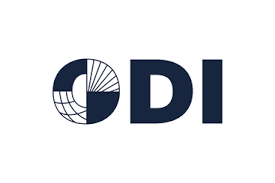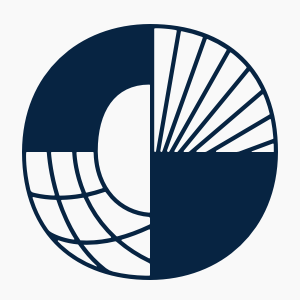
Expert comment
Northern donors are making efforts to fund local actors more directly and enable greater local leadership, notably within climate adaptation programming aiming to promote gender equality. And yet, despite the urgent need, progress to directly fund local civil society, national governments and subnational actors is slow. What is hindering this effort?
The global commitment by the United Nations Framework Convention on Climate Change (UNFCCC) Parties to increase gender-responsive climate finance is dependent on the ability to achieve locally led aspirations in climate adaptation programming. Localising climate adaptation finance can promote the leadership of women, minority or marginalised groups in climate action, drawing on their knowledge and experiences to build community resilience, improve the responsiveness of climate interventions to local priorities, and address the needs of other vulnerable groups such as children. Supporting women’s rights organisations (WROs) specifically can also challenge patriarchal norms in natural resource ownership.
The view from Uganda
Uganda faces a funding gap of roughly US $258 million annually to meet its climate adaptation and mitigation finance needs by 2030. At the same time, Uganda also struggles to fully integrate gender equality into its climate change efforts. Gaps exist in collecting and monitoring gender policy data and there is poor coordination among climate and gender focal points across government. Moreover, the interplay of shrinking civic space and the government’s prioritisation of national economic interests in fossil fuel extraction restricts climate activism, particularly for women’s rights organisations. This further restricts local access to climate finance sources, especially those channelled through government.
While bilateral donors position themselves to respond and support local actors working at the intersection of climate and gender equality, our recent research in Uganda suggests at least five barriers to localising climate adaptation finance (See Figure 1).
1. Ongoing donor risk aversion
Donors recognise the challenges posed by their risk-averse approach, including the administrative burden they place on partners and the power imbalances that underline their approach to risk. However, efforts to simplify and streamline risk mitigation efforts, including the potential to harmonise due diligence systems within and across funders, have not yet been consistent or systematic.
Many Ugandan WROs struggle to meet stringent donor rules and requirements for accessing climate grants, limiting their access to finance. In interviews, they identified some of the preconditions for funding, including high grant thresholds, having in place advanced accounting systems and staff with financial management expertise. Even though these requirements are not specifically targeted at gender focused organisations, they can disproportionately affect smaller and informal women-led climate action initiatives.
A “chicken and egg” problem where WROs need operational funds to get global climate funding, but cannot access this climate finance without systems and capacities deemed appropriate was also raised:
“The[y] look at how much you have received before – would you be able to handle [the] amounts? But [we] need a chance to do this and build [our] capacity” one respondent from a women’s organisation lamented.
2. Donors face organisational capacity constraints too
Organisational constraints within donors hinder their ability to effectively support smaller WROs. If smaller WROs are often unable to absorb large grants, donors also have their own internal capacity challenges in issuing small grants. In a donor interview in Uganda, it was suggested that managing a small grant can cost almost the same as a large one, discouraging direct support to smaller organisations where there are incentives to reduce the administrative costs and disburse quickly.
Furthermore, country-level donor staff revealed that localisation was considered to be a ‘new’ priority, with gender being an additional dimension that still had to be systematically integrated. Currently, an assumption is being made that gender equity in climate programming will organically emerge through locally led processes. However, this risks overlooking how localisation processes may reinforce existing gender inequalities if, for example, local organisations upholding patriarchal norms act as gatekeepers for women to access local resources or engage in critical decision-making fora.
3. Funding local accountability
Donors are accountable to both local actors in partner countries and their own domestic taxpayers. And yet, their priorities are often skewed towards their domestic public. Ensuring local women's voices are heard throughout the knowledge generation, design, and implementation stages of climate projects needs dedicated funding for things like community consultations. Yet, our research found that resources for local accountability and co-design were not always accessible to WROs.
We also found in Uganda that current donor frameworks for measuring progress on climate adaptation place disproportionate emphasis on quantitative targets such as the number of women reached, which can overlook deeper societal and normative change like effects on empowerment and shifting norms.
4. Tensions between local values and donor norms
Donors face challenges in navigating the complexities of aligning international and local gender norms. In Uganda, the Anti-Homosexuality Law, passed in May 2023, creates a misalignment between new donor requirements for LGBTQI+ inclusion in grant applications and the legislative and societal realities on the ground for WROs.
The situation in Uganda presents a challenge for WROs because prevailing public sentiment and official stances tend to be unsupportive of LGBTQI+ rights. There are concerns that efforts to integrate LGBTQI+ issues within existing gender programming, while well-intentioned, might inadvertently alienate key stakeholders, or lead to a backlash against established women's rights initiatives.
5. Power asymmetries in knowledge funding
Best practices in climate adaptation like water-saving technologies or high-tech early warning systems for floods or droughts can take precedence over local knowledge, even when the latter is aligned with gender-responsive goals. Disregarding African spiritual and cultural knowledge systems in climate action can also disproportionately affect women and girls. For example, in Uganda, women have a prominent role in indigenous practices and have felt the loss of cultural sites as a result of oil exploration more strongly than men.
Despite acknowledging the climate-related knowledge of women and indigenous communities, donors in Uganda fall short in allocating meaningful funding towards its amplification. A representative from a Ugandan environmental organisations network, whom we interviewed, highlighted the difficulty of securing financial support for climate initiatives rooted in Ugandan women’s traditional and spiritual practices. They attributed this challenge to a perceived misalignment with prevailing climate science methodologies and standards.
How should donors address these barriers to advance gender responsive climate adaptation?
1. Support and leverage local climate and gender knowledge
Integrating gender equity considerations into locally led adaptation goes beyond funding WROs. It requires investing in the capabilities necessary to effectively design and implement programmes that address specific gender dynamics that affect women, minority and marginalised groups. In working with local climate organisations and governments, donors should prioritise indigenous knowledge systems, especially those that capture the unique perspectives and insights of women and minority groups. Donors can also support local climate organisations and institutions to actively integrate this knowledge into their programming.
2. Develop gender-responsive localisation expertise
Donors should strengthen their capacity to identify and address gender disparities within locally led adaptation programming and integrate gender considerations throughout project design and implementation. This may involve training in the application of gender-responsive political economy analyses, or establishing shared knowledge platforms on good practices to rectify gender disparities, biases and inequalities in locally led climate adaptation initiatives.
3. Finance collaborative ways of working
The co-design of climate action projects with local communities, especially marginalised or minority groups, can empower the latter to identify issues and develop solutions. To be successful, co-design needs to be sensitive to gender inequities, as well as power dynamics in the process of co-design between local actors, donors and their intermediary partners.
For instance, not all local WROs have the resources in place to fund their participation in co-design processes. Donors can provide dedicated funding and resources for the participation of women-led organisations and develop gender-sensitive guidelines to ensure meaningful engagement of those groups facing structural barriers to their participation. At times, this will involve donors or their intermediary partners stepping out of the co-design process to allow local actors to autonomously design initiatives.
4. Share accountability for gender-responsive localisation
Donors, local and national governments, and implementing partners must work together to implement robust monitoring mechanisms that track progress on gender considerations within locally led climate adaptation initiatives (see our previous blog in this series) . By integrating gender indicators into monitoring and evaluation frameworks, stakeholders can track progress towards gender equity goals, identify areas needing improvement, and ensure accountability for achieving positive outcomes. This shared responsibility ensures transparency and accountability for achieving gender targets.
5. Synergise local action and national advocacy for gender equity.
In Uganda, there are clear challenges connected to supporting local leadership and shifting power to local actors in contexts affected by pronounced values-based conflicts like LGBTQI+ rights. However, this is also frequently experienced in relation to women’s rights in other countries where donors pursue gender equality. Supporting local human rights activists is a strategy that can be effective for donors in such contexts. But there are also risks involved in shifting support to civil society, as donors can limit their ability to support the wider enabling environment for gender equity, both within climate interventions and beyond them. Targeted support to local human rights organisations needs to be complemented with sustained, politically sensitive engagement at the national level, for lasting progress on gender equity.
In Uganda, overlooking local gender dynamics and women's knowledge, leadership, and decision-making power undermines the ability to build robust resilience against climate vulnerabilities. However, only 43% ($12.2 billion) of adaptation finance targets gender equality. Localising climate adaptation finance is critical for advancing the twin goals of gender equality and climate resilience but will require dismantling donor barriers that continue to impede progress in this direction.
Authors











